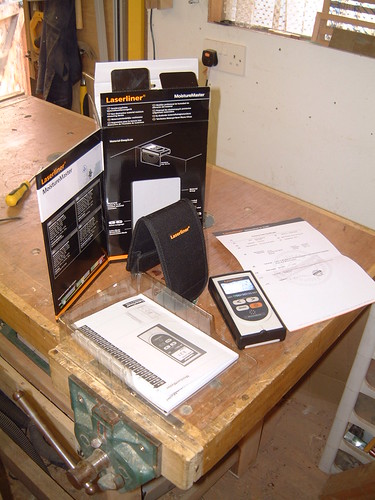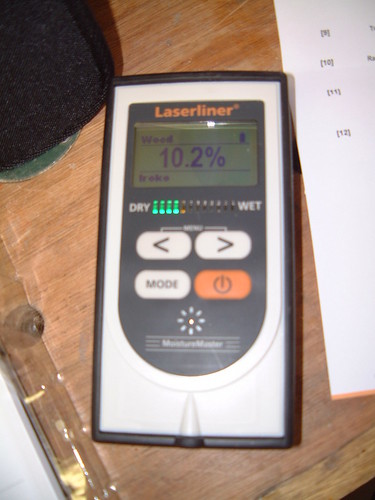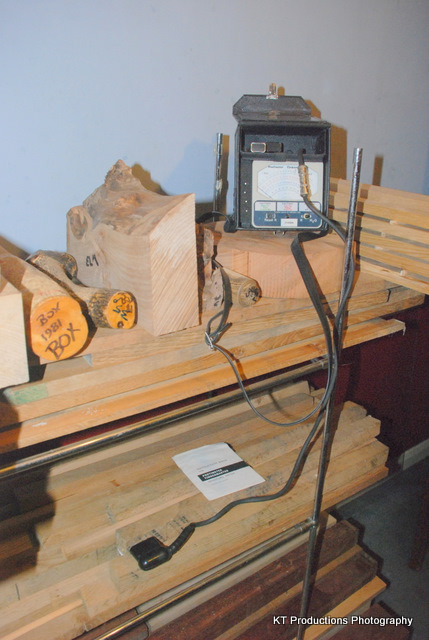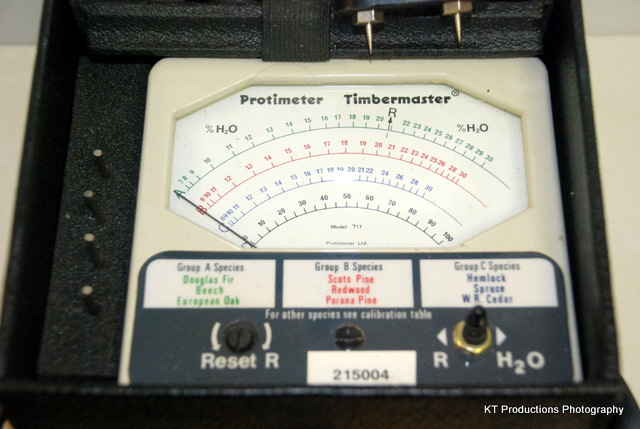Hi folks.
I just wanted to chuck this one into the mix.
I’ve done a site search and can’t find any info on this so I think I should add some.
I’ve been looking for a half decent pin-less moisture meter for about 2 months now and I kept ending up on the same Wagner page. The only thing was I was looking at £475 OOCHHH! (There’s no way I could afford that).
Anyway a Google search under the shopping pages and at about page 14 I found the Laserline pin less moisture meter.
It’s just turned up today (on a Sunday morning).
62 different materials can be selected 56 of which are different wood types.
Measuring depth of up to 30mm.
LED indicators from green to red.
Audible tone for wet.
Comes with a good instruction booklet, factory test certificate, pouch with belt loop and 2 year guarantee.
This thing is all singing and all dancing.
And the best bit £186.99
It’s made in Germany and delivery took 7 days.
Ordered from conrad-uk.com
Item no.: 123155 – 89
Part number: 082.033A
This was just what I was looking for.

DSCF0001 by Matchstickmaker, on Flickr

DSCF0002 by Matchstickmaker, on Flickr
I just wanted to chuck this one into the mix.
I’ve done a site search and can’t find any info on this so I think I should add some.
I’ve been looking for a half decent pin-less moisture meter for about 2 months now and I kept ending up on the same Wagner page. The only thing was I was looking at £475 OOCHHH! (There’s no way I could afford that).
Anyway a Google search under the shopping pages and at about page 14 I found the Laserline pin less moisture meter.
It’s just turned up today (on a Sunday morning).
62 different materials can be selected 56 of which are different wood types.
Measuring depth of up to 30mm.
LED indicators from green to red.
Audible tone for wet.
Comes with a good instruction booklet, factory test certificate, pouch with belt loop and 2 year guarantee.
This thing is all singing and all dancing.
And the best bit £186.99
It’s made in Germany and delivery took 7 days.
Ordered from conrad-uk.com
Item no.: 123155 – 89
Part number: 082.033A
This was just what I was looking for.

DSCF0001 by Matchstickmaker, on Flickr

DSCF0002 by Matchstickmaker, on Flickr



































